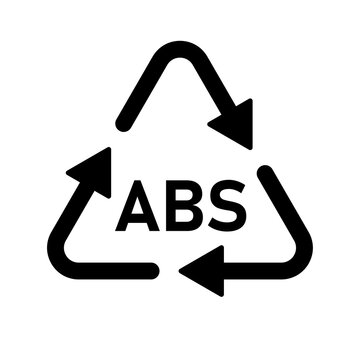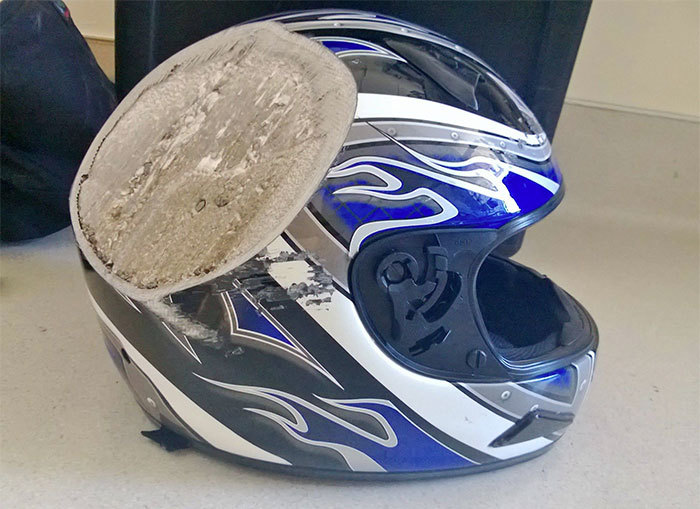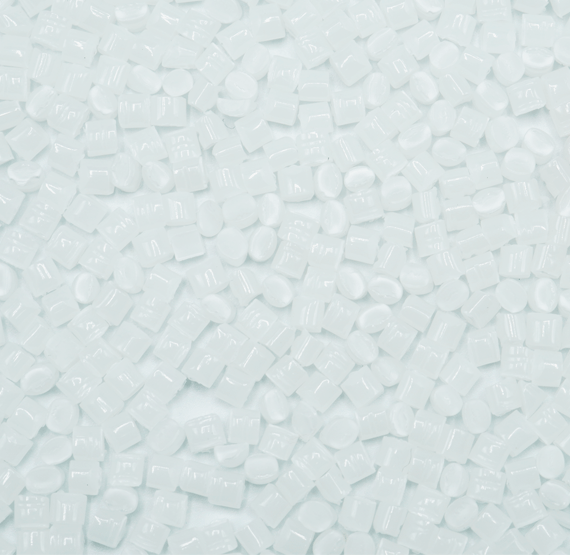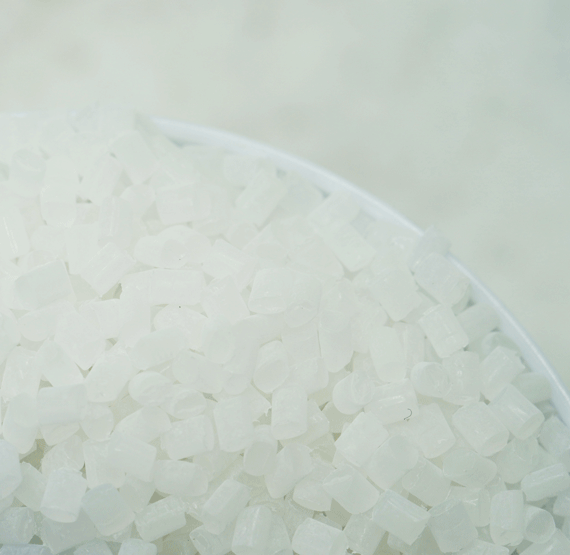In life, we humans are constantly exploiting the resources of the Earth to make useful items or objects for the world. One of those resources is plastic - a material that plays a huge role in the development of humanity. Over time, people have created many different variations of plastic, and one of them is ABS plastic.
However, their disadvantage is that it takes hundreds to thousands of years to decompose, so plastic waste will be very harmful to the environment. To solve this problem, people have continuously recycled ABS plastic. So what's so special about this material? What role does recycled ABS plastic play in life? Find out through the article below.
What is recycled ABS plastic?
First, it is necessary to understand the definition of ABS plastic. ABS stands for Acrylonitrile Butadiene Styrene (chemical formula (C8H8 · C4H6 · C3H3N)n), a non-transparent thermoplastic with good mechanical and thermodynamic characteristics. “Thermoplastic” here means that when plastics are heated to the melting point and then cooled again to return to a solid state, their quality does not change.
To make ABS plastic, the most common way is to mix the three main ingredients acrylonitrile, butadiene and styrene and heat them up, forming a plastic mixture. In addition, other additives such as processing aid, odor removing, or desiccant are also added to make ABS plastic. ABS plastic is a plastic that is cheap, easy to process and has a solid structure, so it is mostly used to manufacture consumer goods such as camera cases, computer keycaps, helmets, protective cases, printer and printer cartridges,...
When these items are damaged and cannot be repaired, they are collected, crushed, melted and molded to become a new form of plastic - recycled ABS plastic.
.jpg)
Recycled ABS plastic
ABS’s Properties
Recycled ABS plastic consists of three main components:
- Acrylonitrile: An organic compound with the chemical formula C3H3N, it provides the rigidity and mechanical strength of ABS plastic.
- Butadiene: An organic compound with the chemical formula C4H6, it provides elasticity and impact resistance.
- Styrene: Having the chemical formula C8H8, this is an organic compound that provides the gloss and thermal stability of ABS plastic.
.png)
Recycled ABS plastic is made up of three compounds: acrylonitrile, butadiene and styrene.
In addition, depending on the final product, manufacturers may add other additives to ABS plastic such as flame retardants, antistatic agents, colorants or anti-corrosion agents.
Can ABS be recycled?
As mentioned above, ABS plastic in particular and plastic materials in general have the disadvantage of being difficult to decompose, so if plastic waste is not handled properly, it will be very harmful to the environment. In order to take advantage of these types of waste, people have researched and developed recycled plastic technology from ABS, thus recycled ABS plastic is born.
ABS Recycling Code
In order to make the recycling process easier, the recycling industry has devised a system of codes to designate different types of plastic. In the case of recycled ABS plastic, this classification code is usually printed on the bottom of the plastic bottle, with the logo ABS surrounded by arrows as shown below. When a product is printed with this logo, this means the product is recyclable.

The ABS logo with three arrows around it, indicating that the product printed with this logo is recyclable.
ABS Recycling Process
Today, the 3D printing industry has flourished, with many people around the world owning 3D printers at home and recycling their own ABS waste at home to make printer materials. So ABS plastic recycling is no longer limited to professional factories. However, whether working at home or working in a factory, the ABS plastic recycling process in general does not make much difference. Basically, the ABS plastic recycling process takes place in 3 steps:
Classification
The recycling process starts with items made entirely of plastic or containing plastic parts such as helmets, phone cases, etc. that are damaged and cannot be repaired, which will be collected to take to the recycling plant. From here, the sorting process begins, with items made of ABS plastic being separated from other forms of plastic, while they also need to be removed from debris and other types of contaminations.

Damaged helmets will be collected and sent to an ABS plastic recycling plant.
Shredding
After the classification process, the items made of ABS plastic will be crushed into small pieces. Recycling factories often use specialized machines, such as 2-axis plastic shredders or hydraulic shredders. As for those who grind ABS at home to make raw materials for 3D printers, this is quite expensive and ineffective because household crushers are not designed for the purpose of crushing ABS plastic.
The common feature of home grinding or factory grinding is, the process is very easy but also really time consuming. If the ABS plastic has been carefully screened, it will be very easy to just put each material to be crushed into the machine, but because ABS plastic has a very solid structure, it will take a long time to grind each plastic material into small pieces. After being grinded successfully, the plastic pieces are then cleaned again before being dried.
Melting and molding
After being dried, the plastic pieces are melted into a liquid form. The plastic mixture is finally put into a press to form fibers or beads, which are then sold to other manufacturers to make new products. Compared with other recycled plastics such as PP, PVC, LDPE or HDPE, ABS recycled plastic is superior in low cost, suitable for industry.

Outstanding recycled ABS plastic thanks to its reasonable price.
Advantages and Disadvantages of Recycled ABS
Ưu điểm
- ABS recycled plastic is environmentally friendly: Using recycled ABS plastic can reduce waste to the environment, thereby minimizing the negative impact of plastic production.
- Reduce costs: Recycled ABS plastic usually costs less than new plastic, thereby reducing processing costs and benefiting both manufacturers and consumers.
- Equivalent physical properties: Even after being crushed and recycled many times, recycled ABS plastic retains the same physical properties as new ABS plastic
Disadvantages
-
Unequal quality: Depending on each factory, the screening and production process of recycled ABS plastic will be different, so the uniformity and overall quality of the output cannot be guaranteed.
- Difficult to control purity: During the screening process, it may not be possible to remove all impurities, thereby affecting the quality of the output product.
- Not easy to maintain: Recycled ABS plastic is easily damaged under the influence of sunlight, requiring manufacturers to invest in the preservation period.
Introducing EuP additives for recycled plastics’ production
At EuroPlas, the company provides three out of six additive solutions for businesses who are using recycled ABS plastic to manufacturing products:
Processing-aid additive
The processing-aid additive is materials added to the polymer to lower the friction between plastics and machines during production. It helps enhance the melting, processability, and handling of high molecular weight plastics without any technical effect on products. Polymer processing aids have a wide range of applications, including blown film, extrusion, and injection molding. Thanks to processing-aid additives, thermoplastic resins can be extruded more effectively. They can add aesthetic qualities by reducing flow traces and die lines, resulting in glossy, transparent products.

Thanks to processing-aid additives, thermoplastic resins can be extruded more effectively.
Odor removing additive
Smelly plastics (especially recycled plastics) can affect their application and competition. Therefore, eliminating bad odors is essential to enhance plastics' effectiveness and value in industrial production.
Odor-removing additive is a savior that works as an odor-neutralizer. It does not replace the original smell in products with fragrances or perfume. Instead, it will prevent the absorption of unwanted odors and irritating chemicals. Odor control additive is utilized widely in rubber plastic products or items made of regrind material such as home appliances, toys, or textile packaging.

Odor-removing additive will prevent the absorption of unwanted odors and irritating chemicals.
Desiccant
Moisture exists in everything, and polymer material is no exception. Especially in technical resins, moisture may cause fisheye and surface defects on final products. Desiccant additive is added to the formula to absorb moisture in the plastic materials, thereby limiting common errors in processing (bubbles, fisheyes, ...) and improving the quality of the end-product.
Desiccant masterbatches from EuroPlas contain Calcium Oxide (CaO), which is a strong water absorber. In polymer processing, Calcium Oxide disperses, eliminates moisture, and prevents phenomena such as fisheye. It also solves moisture problems in extrusion (blow film, film casting, blow molding, etc.) and injection molding. Especially for recycled plastic, it helps remove moisture and cuts out the oxidizing effect that occurs during the recycling of the polymer.

Especially for recycled ABS plastic, desiccant additive helps remove moisture.
At EuroPlas, the company provides additive solutions for ABS plastic, tailored to the production needs of its customers. Possessing modern machinery and a team of experienced professionals, EuroPlas always provides high quality products and is ready to listen to customers' feedback. Please contact EuroPlas for product questions, or if you have specific needs about your next project.